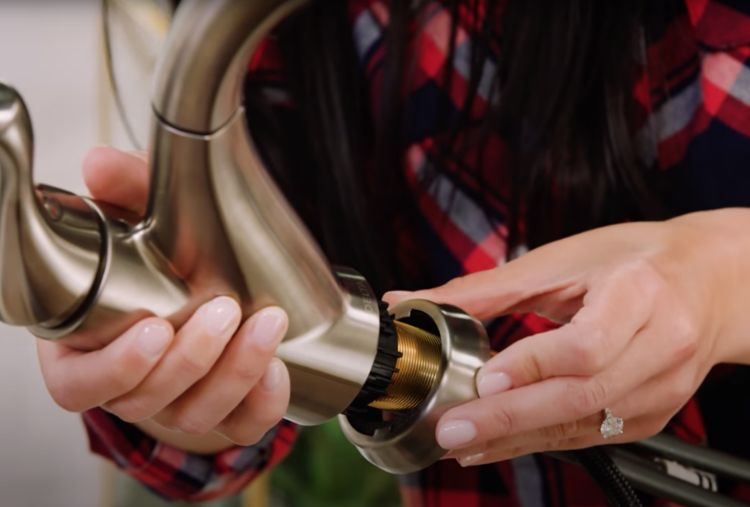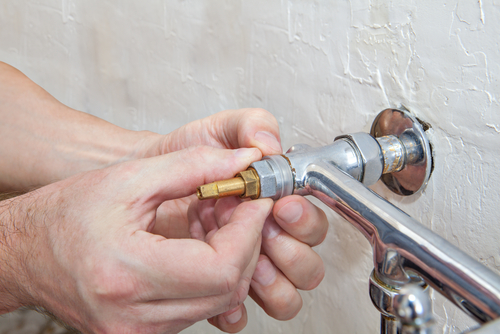What're your insights and beliefs on Why Is It Important To Fix Your Leaking Tap/Faucet??

Dripping faucets might seem like a minor trouble, yet their impact goes beyond simply the inconvenience of the audio. From drainage to sustaining unneeded financial costs and health and wellness threats, neglecting a leaking faucet can bring about various consequences. In this short article, we'll delve into why it's important to address this common family concern promptly and properly.
Wastage of Water
Environmental Influence
Leaking faucets add considerably to water wastefulness. According to the Epa (EPA), a solitary faucet trickling at one drip per second can squander greater than 3,000 gallons of water per year. This not only strains water resources yet additionally affects ecological communities and wildlife based on them.
Step-by-Step Guide to Taking Care Of a Dripping Tap
Tools Called for
Prior to attempting to repair a dripping tap, gather the necessary devices, including an adjustable wrench, screwdrivers, substitute parts (such as washers or cartridges), and plumber's tape.
Common Tap Issues and Their Solutions
Determine the sort of faucet and the particular concern triggering the drip. Usual issues consist of worn-out washing machines, corroded shutoff seats, or malfunctioning O-rings. Refer to producer guidelines or online tutorials for step-by-step guidance on repair work.
Financial Expenses
Raised Water Expenses
Past the ecological influence, leaking taps can blow up water costs considerably. The built up wastage with time translates into higher energy costs, which could have been stayed clear of with prompt fixings.
Possible Residential Property Damages
In addition, prolonged trickling can lead to damage to components and surface areas surrounding the tap. Water build-up can cause staining, deterioration, and also structural concerns if left unattended, causing additional repair work costs.
Health Issues
Mold and Mildew Development
The constant presence of wetness from a dripping tap develops an ideal setting for mold and mold growth. These fungis not only compromise indoor air top quality however additionally present wellness dangers, particularly for people with respiratory problems or allergies.
Waterborne Illness
Stationary water in dripping faucets can come to be a breeding place for bacteria and other microorganisms, raising the risk of waterborne diseases. Pollutants such as Legionella germs flourish in stagnant water, potentially bring about significant ailments when consumed or breathed in.
Do it yourself vs. Specialist Fixing
Pros and Cons of Do It Yourself Repair Work
While some may attempt to deal with a leaking tap themselves, DIY repair work come with their own collection of challenges. Without proper expertise and devices, do it yourself efforts can exacerbate the problem or lead to incomplete fixings, extending the problem.
Advantages of Hiring a Professional Plumber
Working with an expert plumber makes certain that the underlying root cause of the leaking tap is dealt with effectively. Plumbers have the knowledge and tools to diagnose and fix tap problems successfully, saving time and lessening the threat of further damages.
Ecological Duty
Individual Payment to Conservation
Taking obligation for taking care of trickling faucets lines up with wider efforts towards water preservation and ecological sustainability. Every person's activities jointly make a substantial effect on maintaining valuable resources.
Lasting Living Practices
By focusing on punctual fixings and embracing water-saving routines, people contribute to sustainable living practices that benefit both existing and future generations.
Preventive Measures
Regular Upkeep Tips
To avoid leaking faucets, perform regular maintenance such as cleansing aerators, examining for leaks, and replacing worn-out parts without delay. Furthermore, take into consideration setting up water-saving tools or upgrading to a lot more reliable fixtures.
Significance of Prompt Fixes
Addressing leaking faucets as quickly as they're seen prevents additional water wastefulness and potential damage, eventually conserving both water and money over time.
Influence On Building Worth
Assumption of Well-Maintained Property
Maintaining a residential property in good condition, consisting of attending to upkeep concerns like leaking faucets, improves its viewed value and charm among potential customers or occupants.
Influence on Resale Value
Properties with properly maintained plumbing fixtures, including taps, command higher resale values in the realty market. Dealing with dripping taps can add to a favorable perception throughout residential property evaluations and negotiations.
Final thought
Addressing a leaking tap goes beyond simple ease; it's a vital action toward conserving water, minimizing monetary prices, and guarding health and residential property. Whether through DIY repairs or expert aid, doing something about it to deal with trickling taps is a little yet impactful way to promote accountable stewardship of sources and contribute to a healthier, more sustainable future.
How to Fix a Dripping or Leaky Faucet
A leaking faucet is one of the most common problems that homeowners encounter, but it being commonplace doesn’t make it any less annoying. The constant drip drip drip of a leaking bathtub faucet, showerhead, or sink tap can disturb your home’s serenity. Left neglected, a dripping faucet can also result in higher water bills and discoloration or mold growth in your sink or plumbing fixtures.
Fortunately, you don’t have to be a trained plumber to know how to stop a dripping faucet. With some basic tools, replacement parts, and a little patience, leaky faucet repair is a breeze. In this article, we’ll explain what causes dripping faucets and how you can fix them.
What Causes a Leaking Faucet?
Kitchen and bathroom faucets come in all manner of designs, but most involve some combination of valves, O-rings, seals, and washers. The O-ring is usually the weakest link, but any one of these pieces can wear down over time. Heat, moisture, temperature fluctuations, minerals, mold, and movement can contribute to warping and corrosion, breaking the watertight seal. This just comes with the territory of being a homeowner. Everything is always subject to wear and tear, and some component parts of your appliances and fixtures need to be replaced on occasion. At least replacement O-rings are cheap!
More rarely, dripping faucets can be a symptom of excessively high water pressure. Were this the case in your home, you would probably notice that the leak is not isolated to one faucet. Water pressure issues are harder to resolve on your own. We recommend contacting a professional plumber if you suspect your water pressure is too high.
How to Fix a Dripping Faucet
- Pipe wrench or monkey wrench
- Allen wrench set
- Screwdrivers
- Old towel or rag
Shut off the water.
Before you do anything, you need to turn off the water to keep from drenching your kitchen or bathroom. You should find a valve under the sink and against the wall. Once you’ve turned this valve, try turning the faucet on to confirm that the water source has been cut off.
If you can’t locate your local valve for the faucet you’re working on, you can always shut off the water to the house at the main valve. Of course, this will prohibit anyone from using the sinks, showers, or toilets while you’re working on the faucet that’s giving you trouble.
Plug or block the drain.
You’ll be disassembling the faucet and removing some small bits of hardware. Plug the drain with a stopper or rag to avoid the possibility of a small screw falling into your P-trap.
Take apart the faucet assembly.
There are several varieties of kitchen and bathroom faucets, each with its own manner of assembly. For detailed instructions on how to disassemble your faucet, you can refer to the fixture’s manual or contact the manufacturer. If you know whether you have a ball, disc, cartridge, or compression faucet, you can find detailed schematics online.
In general, you need to begin by removing the faucet handles. You might notice a small screw that you’ll need to remove with a screwdriver or Allen wrench. If you don’t see any visible securing hardware, it’s likely hidden under a decorative cap that can be unscrewed or popped off with flathead screwdriver.
Remove each piece methodically, consulting a schematic when necessary. Take notes or arrange the pieces in such a way to make it easier to correctly reassemble the faucet later.
Remove the cartridge.
Once you’ve removed the handles and securing hardware, you should be able to remove the valve cartridge or stem. Some cartridges will slide right out. Other faucet models will require you to loosen a nut with a pipe wrench before you can remove the valve stem.
Examine the exposed hardware.
With the cartridge or stem removed, inspect the component parts. Check the rubber O-rings for wear and tear. Also examine the seat washer for corrosion or other damage. These pieces are usually the responsible parties for a dripping faucet, but it’s worth inspecting the other component parts while you have the faucet disassembled.
Find replacement parts.
Once you’ve identified which faucet component has failed, find an identical replacement. Your local hardware store should have O-rings, seat washers, and other standard components in stock. If you have a luxury or uncommon faucet, you may have to contact the manufacturer for a replacement part.
It’s a good idea to take your old parts with you to the hardware store so you can compare them with the store’s inventory and be sure you’re purchasing the correct replacement.
Reassemble the faucet.
With your new parts in hand, reconstruct the faucet and handles. Don’t be tempted to overtighten screws or nuts. You might think this could create a better seal, but it can instead damage or bend a delicate part of the assembly and create a new problem for you.
Turn on the water and test the faucet.
The only thing left to do is test your work. Unplug the sink, turn the water back on, and try the faucet. Congratulate yourself on a job well done!
https://www.libertyhomeguard.com/how-to-fix-a-dripping-or-leaky-faucet/

We had been shown that write-up about Why Are My Faucets Dripping (And Can I Fix It Myself)? through a buddy on a different web address. Are you aware of someone else who is excited about the subject? Please feel free to share it. Bless you for being here. Return soon.
Comments on “Learning the Value of Resolving a Leaking Faucet”